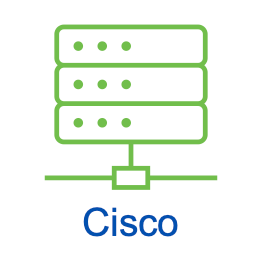ECMS2

Class Overview
Cisco’s Engineering Cisco Meraki Solutions, Part 2
, or ECMS2, is a 3-day training class which elevates your knowledge of Cisco Meraki technology suite. In this advanced technical training course, you’ll learn how to plan for network deployments and integrations using the Cisco Meraki platform.
Through practical hands-on instruction and experiences, you will learn how to operate Meraki networks and troubleshoot complex network incidents using the Meraki Dashboard and analytics. You will also learn how to design Meraki architectures for redundancy, high-density, and scalability by implementing comprehensive Meraki product features to meet design objectives.
This course is the second of two training classes that prepare you for the Cisco Meraki Solutions Specialist certification exam.
Class Details
Objectives
After taking this training, the student should be able to:
- Plan new Cisco Meraki architectures and expand existing deployments.
- Design for scalable management and high availability.
- Automate and scale Meraki deployments.
- Design routing and practices on the Meraki platform.
- Describe Quality of Service (QoS) and traffic shaping design.
- Build Virtual Private Network (VPN) and Wide-Area Network (WAN) topologies.
- Secure, expand, and shape the network.
- Describe network concepts and practices.
- Implement wireless configuration practices and concepts.
- Describe endpoint management concepts and practices.
- Describe physical security concepts and practices.
- Gain network insight through monitoring applications.
- Prepare monitoring, logging, and alerting services.
- Set up reporting and auditing capabilities in the Cisco Meraki Dashboard.
- Gain visibility and resolve issues using Meraki features and built-in troubleshooting tools.
Prerequisite Knowledge Advisory
Although there are no formal prerequisites, before taking this class you should have:
[1] Attended ECMS1 training.
[2] General network knowledge:
- Be actively engaged in the design, deployment, scaling, and management of enterprise networks.
- Strong fundamental knowledge of Internet Protocol (IP) addressing and subnetting schemas necessary to build local area networks.
- Strong fundamental knowledge of dynamic routing protocols (focus/emphasis on Open Shortest Path First [OSPF] and Border Gateway Protocol [BGP]).
- A foundational understanding of wired and wireless QoS mechanisms, packet queue operations, and practical implementations.
- Be experienced with the design and configuration of IPsec and associated VPN technologies.
- A foundational understanding of network security controls/protocols, network management best practices, and data security.
- A foundational understanding of best practice Radio Frequency (RF) design principles and practical implementations.
- A foundational knowledge of wireless security best practices centered around access control (802.1x) and spectrum security through Wireless Intrusion Detection Systems (WIDS) and Wireless Intrusion Prevention Systems (WIPS).
- A foundational command of standard logging/monitoring protocols (focus/emphasis on Simple Network Management Protocol [SNMP], syslog, and webhooks) and related implementation components or tools.
- Be familiar with and have basic knowledge of Application Programming Interfaces (APIs) and related languages/formats (Representational State Transfer [REST], JavaScript Object Notation [JSON]).
[3] Cisco Meraki knowledge:
- Be able to describe the security, reliability, and scalability of the Cisco Meraki dashboard cloud architecture and its out-of-band control plane.
- Fundamental understanding of Dashboard’s organizational structure, delineation of privileges, and overarching administrative processes.
- Be able to outline the key components of Meraki licensing (co-termination model and expiration grace period).
- Have the knowledge and ability to deploy advanced security features on MX security appliances (intrusion detection/prevention, Advanced Malware Protection [AMP], Layer 3 & 7 firewall rules).
- Fundamental understanding of Auto VPN and its purpose when utilized in a Software -Defined Wide Area Network (SD-WAN) deployment.
- Be able to describe the concepts behind a cloud-based Wireless Local-Area Network (WLAN) solution and the features that can be delivered including Layer 7 traffic shaping and various guest access authentication methods.
- Fundamental understanding of device profile containerization and remote management capabilities as managed through the Systems Manager platform.
- Fundamental understanding of the edge architecture as implemented by Meraki MV security cameras and its implications on video retention through various configurable options.
Required Exam for ECMS Certification
Exam: 500-220 ECMS
Proctor: PearsonVUE
Recertification: 3 years
ECMS2 Training Class Outline
Planning new Cisco Meraki architectures and expanding existing deployments.
Designing for scalable management and high availability.
Automating and scaling Meraki deployments.
Routing and design practices on the Meraki platform.
Describing Quality of Service (QoS) and traffic shaping design.
Building VPN and WAN topologies.
Securing, expanding, and shaping the network.
Describing switched network concepts and practices.
Implementing wireless configuration practices and concepts.
Describing endpoint management concepts and practices.
Describing physical security concepts and practices.
Gaining network insight through monitoring applications.
Preparing monitoring, logging, and alerting services.
Setting up reporting and auditing capabilities in the Cisco Meraki Dashboard.
Gaining visibility and resolving issues using Meraki features and built-in troubleshooting tools.


